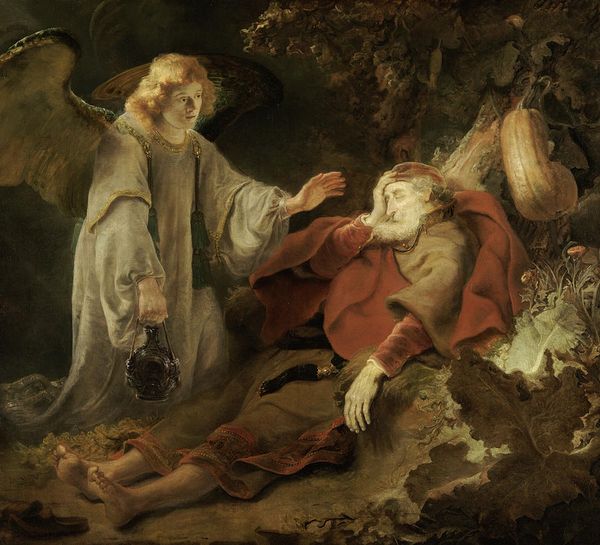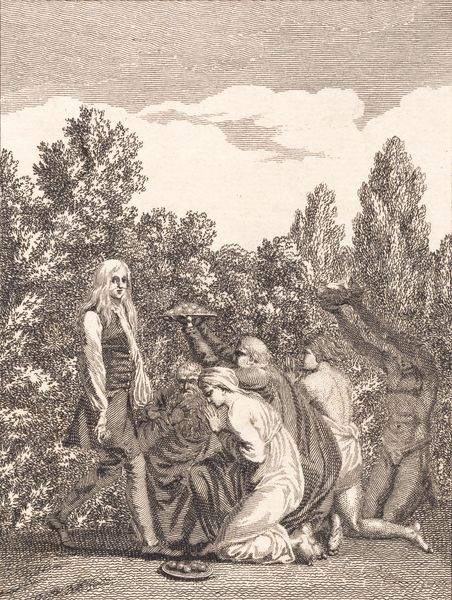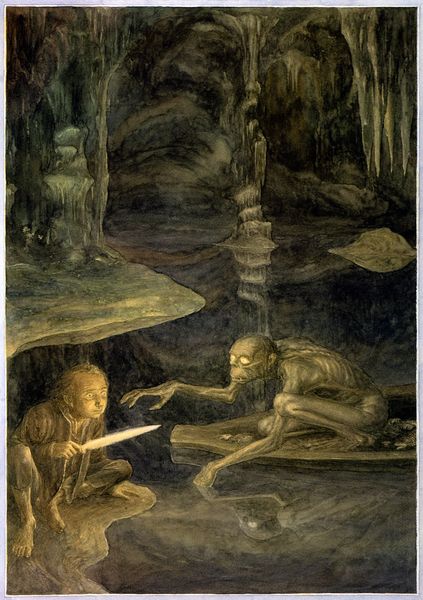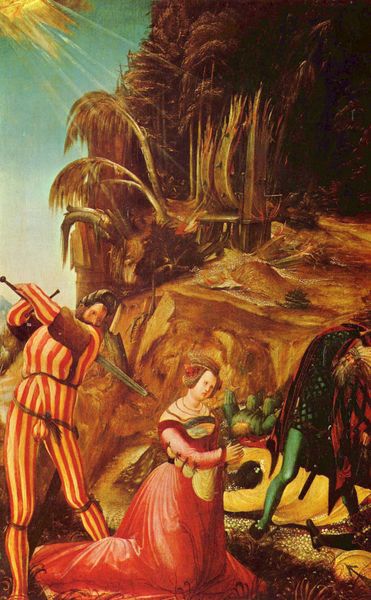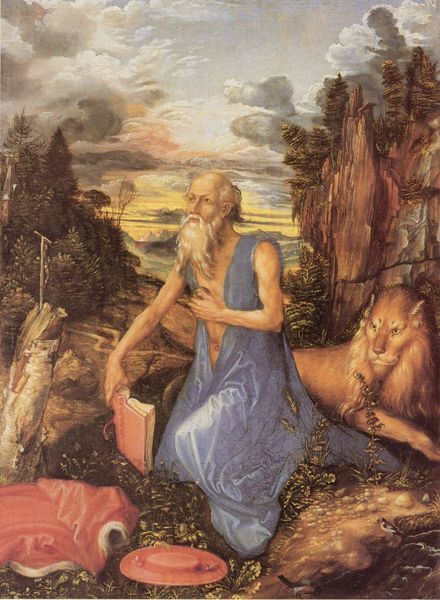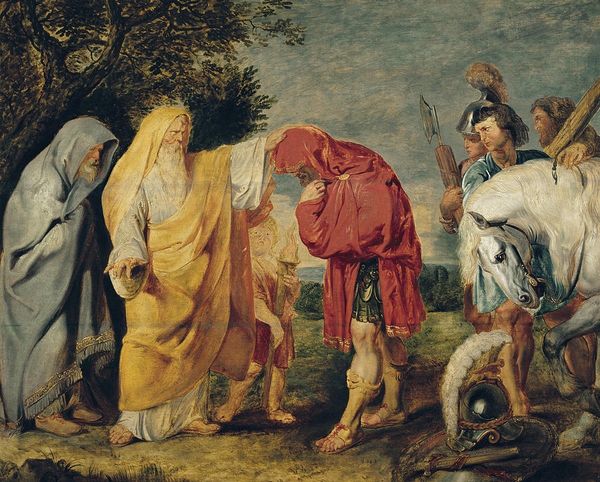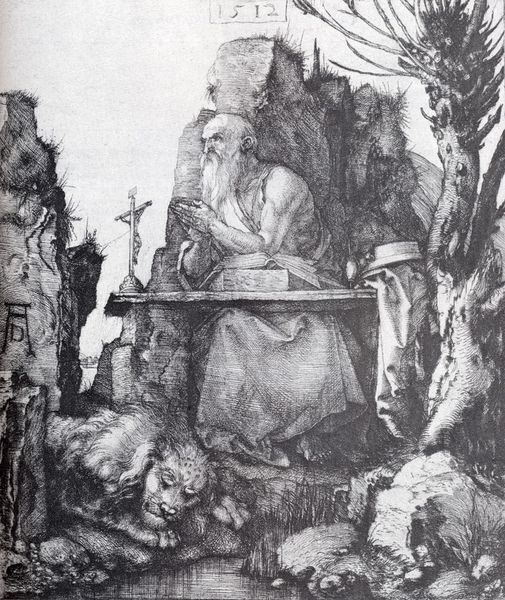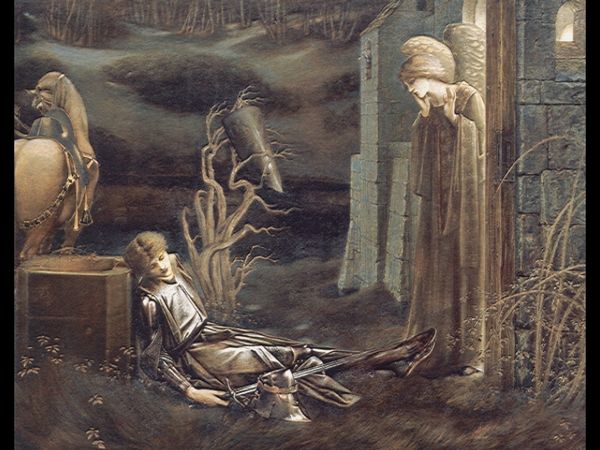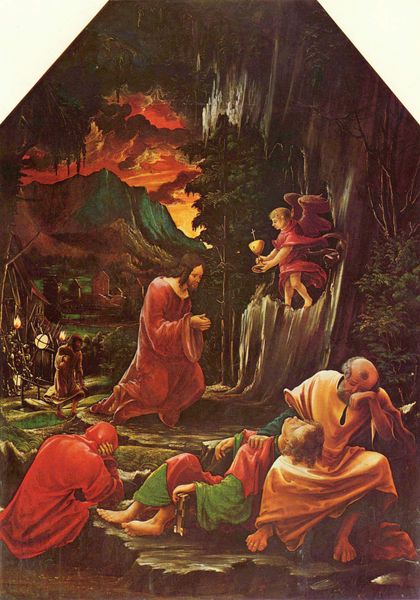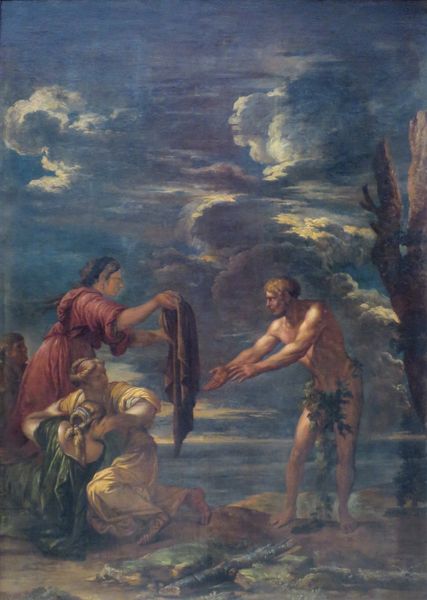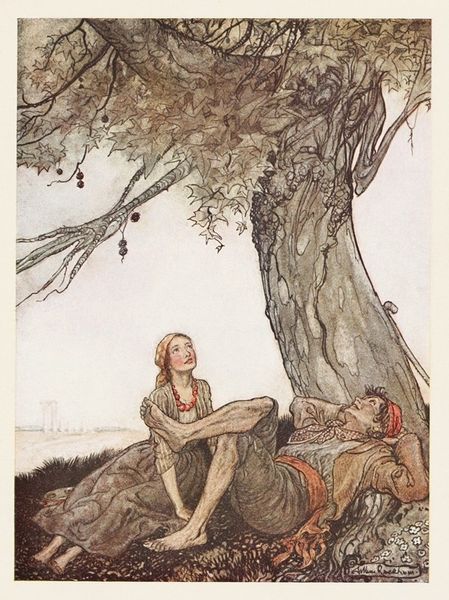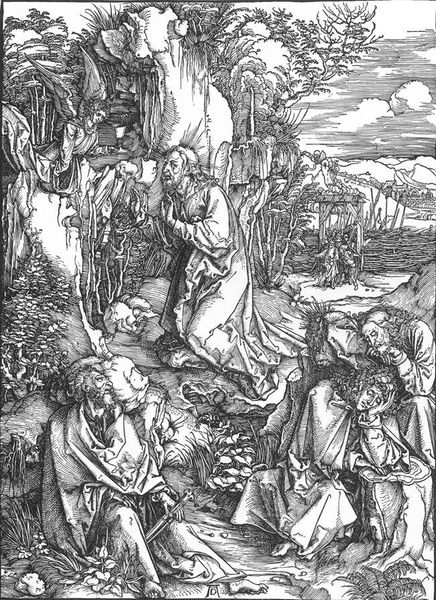
St. Anthony Visiting St. Paul the Hermit in the Desert (left wing of the Isenheim Altar) 1516
0:00
0:00
tempera, oil-paint
#
tempera
#
oil-paint
#
landscape
#
11_renaissance
#
oil painting
#
christianity
#
history-painting
#
northern-renaissance
Copyright: Public domain
Curator: Here we see the left wing of Matthias Grünewald’s Isenheim Altarpiece, depicting “St. Anthony Visiting St. Paul the Hermit in the Desert,” executed around 1516 in oil and tempera. What strikes you upon first viewing? Editor: The overwhelming gloom, pierced by areas of high color, creates such a peculiar mood. And what’s most striking is its raw, almost visceral, energy, especially in the details of the figures and the bizarre landscape. Curator: Absolutely. The light plays a vital role in defining the subjects’ forms and guiding the eye. Notice how the folds of St. Anthony’s cloak and the stark highlights on his face create depth, while the muted tones of the surrounding wilderness intensify the effect. What symbolic elements stand out? Editor: The raven circling above with bread is key—the regular delivery of sustenance in Paul’s isolated life. The very specific details—down to the double-headed goat representing temptation overcome by faith, or Saint Paul's cloak woven from palm leaves—speak of specific aspects of these holy men. Their beards tell of wisdom and age. Curator: I agree completely. And in focusing on those key aspects of iconography, we may risk ignoring that the landscape in itself reflects not just physical space, but a specific interior or spiritual landscape. The interplay of light and shadow, as well as stark compositional balance between the figures and their environment, contribute directly to our understanding of spiritual quest, right? Editor: Without a doubt! Even the color palette emphasizes this division: the cool, subdued colors used to show the wilderness against the warmth in the skin tones to signal faith and endurance, and finally, hope. It is also quite unnerving. There's a tension created, possibly alluding to the difficult trials the monks withstood? Curator: Grünewald has constructed this scene with profound attention to the formal relations. Ultimately the figures communicate more profoundly through gesture and placement. A remarkable convergence of form and iconography. Editor: It is an incredibly powerful image, reminding us that symbols shape not just what we see, but how we understand, in some way reaching out and impacting us.
Comments
No comments
Be the first to comment and join the conversation on the ultimate creative platform.
